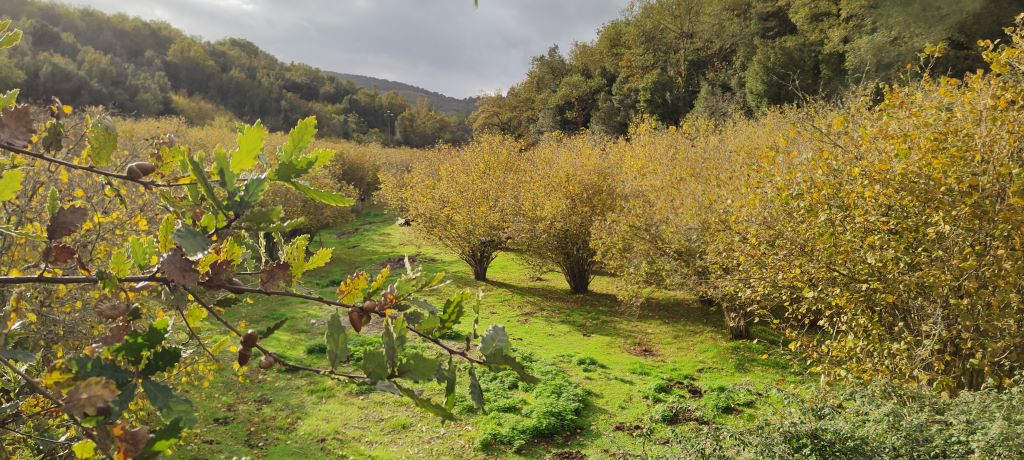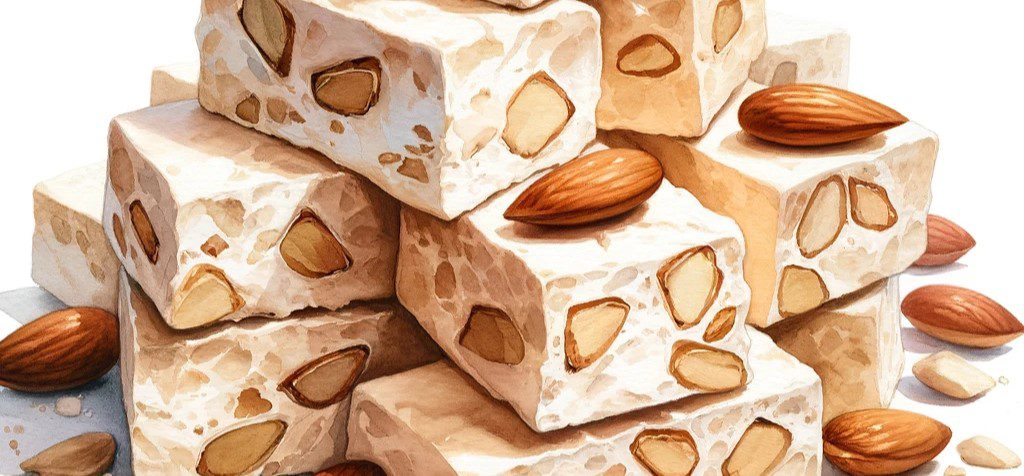Nougat, a dessert cherished worldwide, holds a special place in the Mediterranean culinary tradition, particularly in Italy. Its fame stretches from Cremona’s renowned varieties to Calabria’s award-winning creations, through Sicily’s colorful versions to the delicate flavors of the tender Torrone di Sardegna.
Exploring the roots: the origins and history of nougat
The history of nougat is steeped in debate, with various sources tracing its origins back to ancient Rome. Written records from Varro and Livy suggest that the Samnites were adept at blending honey, egg whites, and nuts into a dessert known as cupedia. Yet, another theory posits that nougat’s invention can be attributed to the Arabs. Regardless of its true origins, there is consensus that the Arabs played a crucial role in its widespread popularity during the Middle Ages.
Sardinia’s nougat legacy
Nougat’s introduction to Sardinia is believed to have occurred during Spanish rule, which was influenced by Arab culinary traditions. Over time, torrone di Sardegna, local nougat, has become one of Sardinia’s most beloved desserts. The town of Tonara stands out for its exceptional ability to preserve and enhance this tradition. Tonara’s torrone is a historic and cultural culinary delight, symbolizing local identity and celebrated at every village festival with stalls laden with nougat blocks containing almonds, walnuts, or hazelnuts. The high-quality hazelnut cultivation in the area has played a significant role in maintaining this tradition. Other Sardinian towns, including Desulo, Aritzo, Guspini, and Pattada, also boast strong nougat traditions. An intriguing anecdote involves Pattada traders introducing nougat to Tonara, although this story remains unconfirmed by written records.
The cultural significance of Tonara nougat
Tonara nougat transcends its status as a mere dessert, embodying a vital aspect of Tonara and Sardinian cultural heritage. Its production, tied to holidays and celebrations, particularly Easter, demands artisanal skill, patience, and dedication. This nougat’s fame has crossed Sardinian and Italian borders, making it a global ambassador of Sardinian taste and tradition. The focus on ingredient quality and sustainable production has grown alongside its popularity.
Nougat festivals in Tonara draw international visitors keen on discovering this historic dessert and immersing themselves in local culture, while also providing a platform for artisans to demonstrate their skills and preserve traditional methods.
Tonara nougat represents more than a culinary achievement; it is a beacon of cultural heritage, local identity, and the enduring value of tradition. Its history and distinct flavor continue to captivate, showcasing the richness of Sardinian culture.

The recipe
Ingredients:
- 750 g of Sardinia honey (wildflower, strawberry tree, acacia, or eucalyptus)
- 1 untreated yellow lemon
- 750 g of shelled and toasted almonds
- 3 egg whites
- Wafers for covering
Preparation:
- Melt the honey in a copper container over a bain-marie.
- Whip the egg whites in a separate bowl.
- Away from heat, fold the whipped egg whites into the melted honey, mixing with a wooden ladle for 30 minutes.
- Return the mixture to the bain-marie and continue stirring for at least three hours; the longer it cooks, the harder the nougat becomes.
- Incorporate the almonds, both chopped and whole, into the mixture.
- Pour into wooden molds lined with wafers and allow to cool.
Discover the joy of crafting your own Sardinian nougat, a sweet embodiment of tradition and artisanal skill.
Are you excited to dive into the authentic flavors of nougat right in its homeland? Explore our handpicked travel suggestions:
- Sardinia traverse by bike
- Sardinia’s Soul Hike


